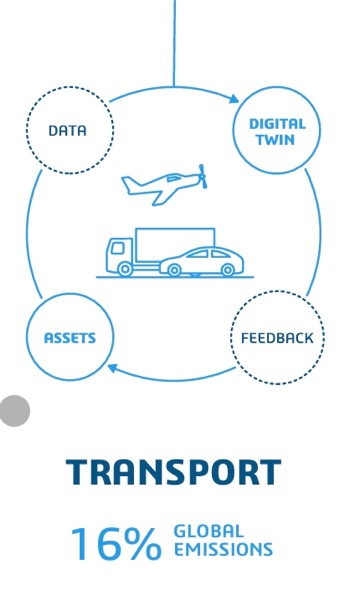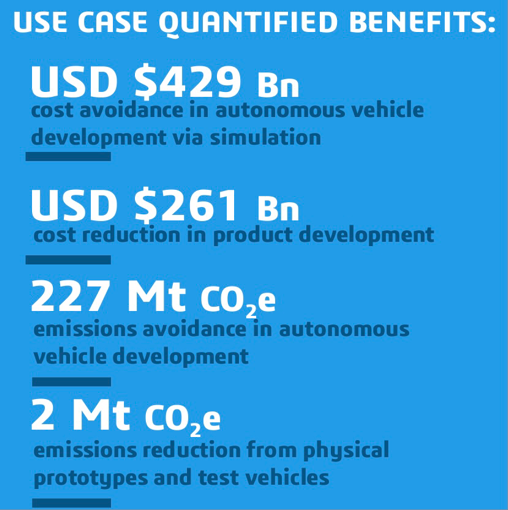 In their eye-opening whitepaper, Accenture and Dassault Systèmes demonstrate how virtual twin technologies can accelerate sustainable transformation by reducing operational costs and driving circular, end-to-end disruption in value chains. According to the report, the global virtual twin market was worth an estimated USD $5.4 billion in 2020 and is projected to grow at 36% CAGR over the next five years. This future growth is expected to be led by the transportation industry. Current adoption rates are at 30–40% for electric vehicle startups and 60-–70% for best-in-class OEMs. By the end of 2020, 65% of automotive manufacturers were using simulation and virtual twins to operate products and assets.
In their eye-opening whitepaper, Accenture and Dassault Systèmes demonstrate how virtual twin technologies can accelerate sustainable transformation by reducing operational costs and driving circular, end-to-end disruption in value chains. According to the report, the global virtual twin market was worth an estimated USD $5.4 billion in 2020 and is projected to grow at 36% CAGR over the next five years. This future growth is expected to be led by the transportation industry. Current adoption rates are at 30–40% for electric vehicle startups and 60-–70% for best-in-class OEMs. By the end of 2020, 65% of automotive manufacturers were using simulation and virtual twins to operate products and assets.
Use Case I Transport and Mobility: Product Design, Prototyping and Testing with Virtual Twin Technology
Emissions from transport by road, rail, air and marine accounted for 25% of global CO2 emissions in 2016 and have been growing faster than from any other sector. Automotive companies are under constant pressure to produce better cars that meet increasingly stringent legal requirements for safety and environmental sustainability, as well as growing consumer demands, and to bring them to market at speed and scale. Virtual twin technologies have a long history in automotive applications. They accelerate time-to-market, help bring costs down for new drivetrains, lightweight body designs and 25-year EV batteries and they are indispensable to develop autonomous transportation.
With a virtual twin, an OEM can test multiple designs and features and largely eliminate physical prototyping and physical tests. By leveraging a virtual twin in the early stages of product development, OEMs can bring waste and development costs down to a minimum. One large European OEM using virtual design and verification has been able to:
- Reduce product development time by months
- Accurately predict localized effects like material and connection failure to improve quality
- Reduce physical prototypes for models with limited design updates by 70–100% (for some models, physical prototypes have been eliminated altogether)
 The avoidance of prototyping and physical testing enabled by 3D modeling and virtual simulation technologies when new vehicles are designed, prototyped and tested can generate USD $690 billion in cost savings and 230 Mt CO2e emissions avoided.
The avoidance of prototyping and physical testing enabled by 3D modeling and virtual simulation technologies when new vehicles are designed, prototyped and tested can generate USD $690 billion in cost savings and 230 Mt CO2e emissions avoided.
Using virtual twins in new vehicle development can drive other production costs down, like crash tests, and dramatically shorten overall time-to-market. Every day, they are helping to accelerate the development of autonomous vehicles with a significantly reduced carbon footprint by substituting a big portion of the total test mileage required with simulations, taking us a step closer to achieving our global greenhouse gas reduction targets.
Read more about the development of next-generation vehicles using shared intelligence here.
Discover how cities and industry will develop products, infrastructure, and services for urban mobility into the future by making informed decisions based on data here.
Download the whitepaper on the critical role of virtual twins to accelerate sustainability here.
Join our User Communities to stay on top of the latest industry news, ask questions and collaborate with peers:
